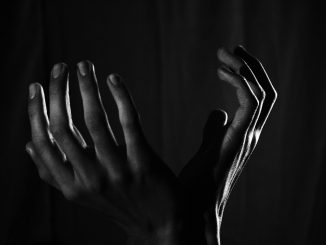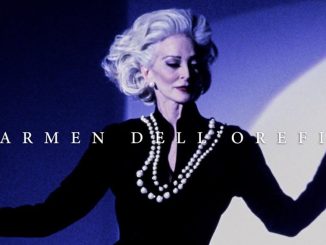
Creating an aesthetically pleasing office environment is not merely about enhancing visual appeal; it’s about crafting spaces that inspire creativity and boost productivity. Professional designers and fit-out specialists play a crucial role in achieving these goals by meticulously tailoring office designs to reflect a company’s culture and brand identity. This guide delves into how these professionals transform mundane spaces into vibrant, functional work environments that resonate with both employees and clients.
Understanding Your Vision
The first step in any office transformation is for design professionals to fully grasp what the client envisions. This involves thorough discussions about the company’s goals, values, and the atmosphere they wish to cultivate within their workspace. Professionals use this information to create a design that not only meets aesthetic aspirations but also aligns with the company’s operational needs. Whether a firm desires a collaborative open-plan workspace or needs private areas for concentrated work, understanding the client’s vision is paramount to developing a functional and visually appealing office layout.
Incorporating Professional Design Elements
Once the vision is clear, designers begin to incorporate high-level design elements that define the space’s aesthetic and functionality. This is where expertise from specialized firms like Blade Runner Landscapes can be invaluable, particularly in selecting and integrating natural elements that bring life and vibrancy to office settings. These professionals ensure that every aspect of the office design—from the floor plan to the choice of materials—serves a purpose and enhances the overall work environment. It’s about creating a space that employees enjoy coming to, which in turn, enhances productivity and workplace satisfaction.
Choosing the Right Color Scheme
Colors significantly impact the mood and atmosphere of any space, making the selection of a color scheme a critical decision in office design. Professionals help clients choose a palette that not only reflects the company’s brand but also influences the workforce’s mood and energy levels. For instance, blues and greens are often used to create a calm and focused environment, while vibrant colors like yellows and oranges can energize and stimulate creativity. The right color scheme can transform an office from a bland space into a dynamic environment that supports employees’ well-being and productivity.
Furniture Selection
Choosing the right furniture is essential not only for aesthetics but for employee comfort and health. Designers work to find pieces that are both stylish and functional, supporting ergonomic health and complementing the visual theme of the office. This might include selecting ergonomic chairs that prevent back pain, desks at the right height, and communal tables that encourage teamwork and interaction. The goal is to equip the office with furniture that enhances the look and feel of the space while also contributing to the overall functionality and comfort of the workplace.
Lighting Solutions
Lighting plays a pivotal role in setting the right tone and ambiance in an office, influencing both the aesthetics and the productivity of the space. Professionals carefully select lighting options that provide adequate illumination for various tasks while complementing the office’s design theme. This could involve a mix of ambient lighting for general illumination, task lighting for specific workstations, and accent lighting to highlight architectural features or artworks. The right lighting not only enhances the office’s visual appeal but also contributes to a healthier work environment by reducing eye strain and improving mood.
Art and Decor
Incorporating art and decorative elements is another transformative aspect that professionals focus on when designing an aesthetic office space. Well-chosen artwork can profoundly impact the office atmosphere, inspiring creativity and reflecting the company’s cultural values. Design experts often curate unique pieces that resonate with the brand’s identity and enhance the overall workplace aesthetic. Whether it’s bold, modern art to energize the space or more subdued pieces that promote calm and focus, the right decor can turn a simple office into a stimulating and visually appealing environment.
Ergonomic Layout
A crucial element in office design is the ergonomic arrangement of the space to promote health, comfort, and efficiency among employees. Professionals meticulously plan the layout to ensure optimal use of space and ease of movement. This includes considering the placement of furniture, equipment, and common areas to facilitate natural flow and interaction. Strategic layout planning also helps in minimizing physical strain by ensuring that workstations and seating arrangements support proper posture and reduce the risk of injury. A well-designed ergonomic layout contributes significantly to the overall functionality and comfort of the office, making it a more productive environment.
Integrating Technology
Today’s office environments are increasingly tech-driven, necessitating the seamless integration of technology into the design. Professionals ensure that the workspace supports the latest technological needs, from smart conference rooms to efficient cable management systems. This integration helps maintain a clutter-free and efficient workspace, enabling employees to work more effectively. Designers also consider future tech upgrades, providing flexible solutions that can adapt to new technologies without requiring major overhauls. This foresight ensures that the office remains functional and modern over time.
Attention to Detail
Professionals know that the devil is in the details. It’s the small touches—like the choice of textiles, the finish on the wood, or the hardware on the furniture—that can elevate an office from standard to spectacular. These details might seem minor, but they contribute enormously to the overall aesthetic and feel of the space. Designers spend time selecting materials that not only look good but are also durable and suitable for the office environment. This meticulous attention to detail ensures that every aspect of the office design is cohesive and finely tuned to the company’s aesthetic goals.
Sustainable Practices
Sustainability is becoming increasingly important in office design. Professionals often incorporate eco-friendly practices and materials into their projects, reflecting a commitment to environmental responsibility. This may include using recycled materials, implementing energy-efficient lighting systems, and incorporating plants to improve indoor air quality. These sustainable practices not only help the environment but also create healthier and more pleasant workspaces for employees.
In conclusion, the process of transforming an office into an aesthetically pleasing workspace is intricate and multifaceted, involving much more than superficial changes. It requires a deep understanding of the client’s needs, a careful selection of design elements, and a thoughtful integration of technology and sustainability. By focusing on everything from the overall layout to the smallest details, professionals can create office spaces that are not only beautiful but also promote a productive and positive working environment. Through expert design and thoughtful execution, any workspace can be turned into a place where employees feel motivated and valued, ultimately contributing to the company’s success.




